Dieting
 The following article is a small excerpt from one of my books. I hope you’ll want to learn more and let me help you to get into the best shape of your life.
The following article is a small excerpt from one of my books. I hope you’ll want to learn more and let me help you to get into the best shape of your life.
On any given day, millions of people are on a diet and counting calories in one way or another.
This Person was extremely overweight, so she went to her doctor who put her on a diet.
I want you to eat regularly for 2 days, then skip a day, eat regularly for 2 days, then skip a day and repeat this procedure for 2 weeks the doctor said.” The next time I see you, you’ll have lost at least 5 pounds.”
When she returned, she shocked the doctor. She had lost nearly 20 pounds.
Why, that’s amazing!” the doctor said. “Did you follow my instructions?”
She nodded. “Ill tell you though, I thought I was going to drop dead that 3rd day.”
“From hunger, you mean?” asked the doctor.
No, from all that skipping!”
If losing weight and getting into shape was so easy why are so many people (and especially for anyone older than 30 years old), weight gain seems to be a fact of life? It’s because your body is way too efficient! It just does not take that much energy to maintain your body at rest; and when exercising, your body is amazingly frugal when it comes to turning food into motion.
At rest for example, while sitting and watching television, your body burns only about 12 calories per pound of body weight per day (26 calories per kilogram). That means that if you weigh 150 pounds (68 kg), your body uses only about: 150 X 12 = 1,800 calories per day. More accurate calculations can be found in my book ‘Get Fit Stay Fit’. These 1,800 calories are used to do everything you need to stay alive:
In motion, your body also uses energy very efficiently. For example, a person running a marathon (26 miles or 42 km) burns only about 2,600 calories. In other words, you burn only about 100 calories per mile (about 62 calories per km) when you are running.
You can see just how efficient your body is if you compare your body to a car. A typical car gets between 15 and 30 miles per gallon of gasoline (6 to 12 km/L). A gallon of gas contains about 31,000 calories that means that if you could drink gasoline instead of eating hamburgers to take in calories, you could run 26 miles on about one-twelfth of a gallon of gas (0.3 L). In other words, you would be getting more than 300 miles per gallon (120 km/L)! If you put yourself on a bicycle to increase the efficiency, you could get well over 1,000 miles per gallon (more than 500 km/L)!
This level of efficiency is the main reason why it is so easy to gain weight.
The 1,800 calories that a typical person at rest needs per day is just not that many. When you track and see how much you actually do eat in a day, you can see how the number of calories coming in can easily reach 3,000, 4,000 or 5,000 per day without any effort at all. That’s the problem.
Your body is extremely efficient at capturing and storing excess calories. Whenever your body finds that it has excess calories on hand, it converts them to fat and saves them for a rainy day. It only takes 3,500 excess calories to create 1 pound of new fat on your body. If you are taking in just 500 extra calories per day, then you are gaining a pound of fat per week (500 calories x 7 days in a week = 3,500 calories/week). Since it is easy to get 500 calories from just one ice cream cone or a few cookies, you can see that weight gain is completely effortless in today’s society. Food is just too easy to find.
Let’s imagine that you are overweight and you would like to lose several excess pounds. To lose 1 pound of fat, what you have to do is burn off 3,500 calories. That is, over a period of time, you have to consume 3,500 calories less than your body needs. There are several ways you can create that deficit. If you assume that you weigh 150 pounds and that your body at rest needs 1,800 calories per day (150 * 12 = 1,800) to live, here are several examples (some realistic, some not):
- You could lie in bed and starve yourself. Since you are lying in bed, you are consuming 1,800 calories per day. Since you are starving yourself, you are taking in no calories. That means that, every day, you create a deficit of 1,800 calories and approximately every two days, you will lose 1 pound.
- You could consume fewer calories than your body needs. You might choose to consume 1,500 calories per day rather than the required 1,800 by controlling what you eat. That creates a 300-calorie deficit every day. That means that approximately every 12 days, you will lose 1 pound. (12 days x 300 calories = 3,600 calories).
- You could consume 1,800 calories per day and then choose to jog 2 miles (3.2 km) every day. The jogging would burn about 200 calories per day, and over the course of 18 days you would burn about 1 pound. (18 days x 200 calories = 3,600 calories).
- You could consume 2,500 calories per day and run 10 miles per day. You will burn 1,800 calories per day at rest and then 1,000 calories per day running, for a total of 2,800 calories. You are consuming 300 calories fewer than you need, so you would lose a pound every 12 days or so (300 calories x 12 days = 3,600 calories).
As you can see from these examples, the only way to lose fat is to consume fewer calories per day than your body needs. For every 3,500 calories that you body takes from its fat reserves, you lose 1 pound (0.45 kg) of body fat. You can create the deficit either by monitoring and restricting your intake of calories, or by exercising or both.
The idea behind most diets is simply to help you lower the number of calories that you consume each day. That’s all they do.
The reason why most diets tend not to work for very long is because they are not sustainable. You gain weight because you consume more calories per day than needed. The diet creates a temporary deficit. When the diet ends, you go back to normal eating and the weight comes back.
On a daily basis your body is taking in, and therefore storing, 50 calories more than it needs. So every 70 days (3,500 calories in a pound / 50 calories each day = 70 days) you gain 1 pound (0.45 kg). If this 50 extra calories per day trend continues, then over the course of a year you would gain 5 pounds. This, by the way, is the pattern for a big portion of the population. If you over-consume by just a few calories per day, over time you will gain weight. Keep in mind that just one Oreo-type cookie contains 50 calories, so over-consuming is incredibly easy.
This is why diets don’t work for most people. You do lose weight, but then go off the diet and gain it back. What is needed instead is a sustainable diet, a food consumption and exercise plan , that lets you live a normal life and eat normal foods in a normal way.
Building a sustainable diet and exercise plan is the key to maintaining a consistent weight. This is not easy for many people.
The first step is to start counting the calories that you consume on a day so that you become conscious of how many calories it is you are actually eating.
The second step is to figure out how many calories you need in a day. (Formulas are found in my book ‘Get Fit Stay Fit’)
Pick your ideal weight, and then calculate how many calories a day you can consume to maintain that weight.
Step Three is to compare the two numbers. You may be startled by the difference between the number of calories you need and the number of calories that you take in, in a day. This is where the extra pounds are coming from.
The fourth step is to figure out how to bring the two numbers in line. What you will soon realize is that 1,600 or 1,800 or 2,000 calories per day just isn’t that many. You have to watch and counteverything you eat and drink every day and stick to your daily limit.
The fifth step is to add exercise to the mix so that you can raise the number of calories you can consume per day. My Online calculators will show you how many calories different forms of exercise can burn. Burning 250 or 500 calories per day through exercise can make a big difference.
If you follow some of the strategies in my book ‘Get Fit Stay Fit’, you will lose fat and maintain a consistent weight.
Exercise is one tool you have to control your weight because exercise is a way to increase the number of calories that you burn in a day.
Try to find some type of exercise that you enjoy (or at least can tolerate) and do it every day for 30 minutes, 60 minutes or more. It might be walking, riding an exercise bike while watching TV, or working out in a gym at lunch.
Instead of taking the elevator, take the stairs, park farther away from stores when you go shopping. These little things can add up.
Find an exercise partner. Exercise, for some people, is a lot easier if there is someone to talk to. A partner will also help make exercise a routine.
Try to exercise every day. It is easier to remember to do something if you do it every day.
There are dozens of weight-loss myths out there that try to confuse and distract you. Here is a list of some of the most common so you can try to avoid them:
- The myth that some kinds of calories are different from others. A calorie is a calorie. If you consume 4,000 calories by eating 1,000 grams of white sugar or 4,000 calories by eating 444 grams of fat, it is still 4,000 calories.
- The myth that low-fat foods are okay or that you can eat as much as you want if it is low-fat . A product can have 0 grams of fat but still have lots of calories. Many fat-free foods replace the fat with sugar and contain just as many or more calories as a fat-containing product.
- The myth that any passive device, acupressure rings and bracelets or soaps or whatever, can help – There is no way to burn calories but to burn them.
- The myth that you can lose 54 pounds in 6 weeks – Despite what the ads say (I LOST 54 POUNDS IN 6 WEEKS WITHOUT DIETS OR EXERCISE!!! or LOSE 10 POUNDS THIS WEEKEND!), you cannot lose a pound of fat unless you burn off 3,500 calories. To lose 54 pounds in 6 weeks, you would need to lose 9 pounds in 7 days, or 1.3 pounds per day. That 1.3 pounds of fat is equal to 4,500 calories, so you would have to burn off 4,500 calories per day. The only way to do that would be to eat nothing AND run a marathon every day for 42 days. That’s impossible. The only way to lose that much weight that quickly is either through dehydration or amputation.
What is true is that you have to eat fewer calories than you burn in a day if you want to lose weight. You can do that by eating fewer calories than you need, or by exercising more, or both .
I know you want to get in shape and look great. Whatever your fitness goal…to slim down…gain muscle…tone your arms or flatten your tummy…I’m here to help you accomplish your goals and to improve your fitness level. If you have enjoyed this article and the many other free features on my site, and would like some more comprehensive information such as fitness books and CD’s to aid you in achieving your health and fitness goals, please visit my ONLINE STORE where you will find innovative natural health and beauty products to help you become the BEST YOU CAN BE !


 The following article is a small excerpt from one of my books. I hope you’ll want to learn more and let me help you to get into the best shape of your life.
The following article is a small excerpt from one of my books. I hope you’ll want to learn more and let me help you to get into the best shape of your life.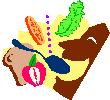 The following article is a small excerpt from one of my books. I hope you’ll want to learn more and let me help you to get into the best shape of your life.
The following article is a small excerpt from one of my books. I hope you’ll want to learn more and let me help you to get into the best shape of your life.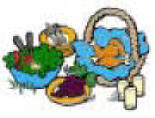 The following article is a small excerpt from one of my books. I hope you’ll want to learn more and let me help you to get into the best shape of your life.
The following article is a small excerpt from one of my books. I hope you’ll want to learn more and let me help you to get into the best shape of your life.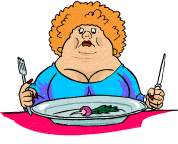 The following article is a small excerpt from one of my books. I hope you’ll want to learn more and let me help you to get into the best shape of your life.
The following article is a small excerpt from one of my books. I hope you’ll want to learn more and let me help you to get into the best shape of your life.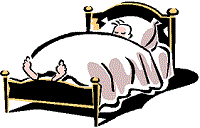 The following article is a small excerpt from one of my books. I hope you’ll want to learn more and let me help you to get into the best shape of your life.
The following article is a small excerpt from one of my books. I hope you’ll want to learn more and let me help you to get into the best shape of your life. The following article is a small excerpt from one of my books. I hope you’ll want to learn more and let me help you to get into the best shape of your life.
The following article is a small excerpt from one of my books. I hope you’ll want to learn more and let me help you to get into the best shape of your life.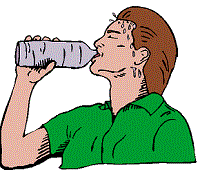 The following article is a small excerpt from one of my books. I hope you’ll want to learn more and let me help you to get into the best shape of your life.
The following article is a small excerpt from one of my books. I hope you’ll want to learn more and let me help you to get into the best shape of your life.
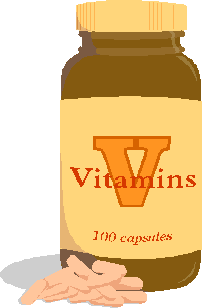 The following article is a small excerpt from one of my books. I hope you’ll want to learn more and let me help you to get into the best shape of your life.
The following article is a small excerpt from one of my books. I hope you’ll want to learn more and let me help you to get into the best shape of your life.